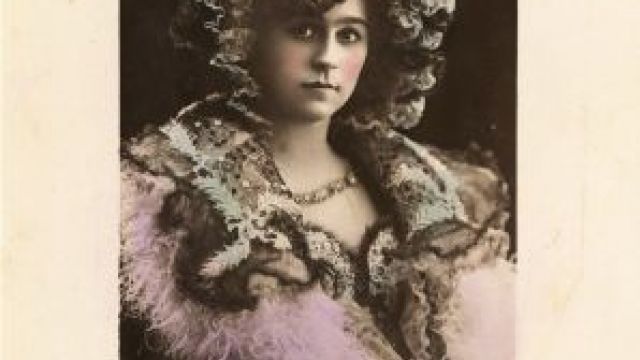Australia’s Most Popular Actress … 100 Years Ago
American, Minnie Tittell Brune was the most popular actress on the Australian stage between 1904 and 1909. Perhaps it was her long dark hair, perfect manners, quiet religious sentiment or her San Francisco accent that endeared her to Australian audiences. Strangely she never duplicated her Australian success overseas.
Born Minnie Tittle in San Francisco in 1875, Minnie and her two sisters grew up in a boarding house across the road from a theatre. Probably exposed to theatrical eccentricities from an early age, one of the themes of her life was the battle between the theatre and the religious leanings of her Catholic family.
In her early life, the theatre won. She started acting in America with Charles Frohman and then travelled to England where she married Clarence Brune. It was there that she was spotted by J C Williamson and booked to tour Australia.
Her arrival in June 1904 was inauspicious. Her ship, The Australia, ran aground at Port Phillip Bay. Thankfully the wreck was not an omen for the tour. Minnie’s religious sensibilities kept her calm during the crisis and she was fatalistic about the accident. “If it was to have been that I should be drowned ‐ well that’s about it. It would have happened so.”
In September 1904, Minnie appeared for the first time in Sydney at Her Majesty’s Theatre. The play was Sunday. The title role, a lovable girl at a miners camp, was to become her most famous. Rapturously welcomed by Sydney audiences, the newspapers described her performance as ‘a triumphal achievement.’
After Sunday, Minnie appeared in L’Aiglon as Napoleon’s son. In this role, she had to memorise over one hundred and thirty type written pages of script and sustain an intense emotional pitch throughout the five-act play. Her success was said to be ‘sensational.’ Another astounding performance as Juliet followed. The diversity of roles showed the unique versatility of the actress.
After her amazing reception in Sydney, Minnie progressed to Melbourne in May 1905, where she reprised Sunday. The response in Melbourne was as intense as in Sydney. Her work was praised for its intelligence and emotional power. In Melbourne she was described as a genius.
Minnie opened in Sydney as Camille in October 1905, her performance compared favourably to Sarah Bernhardt by Sydney critics. Her religious inclinations affected her work in this role as she refused to smoke in the part. Minnie was a teetotaller and non smoker, and stuck firmly to her religious convictions wherever she travelled.
Her subsequent performances in Sunday and L’Aiglon proved her worth as an actress and her drawing power. In 1906, Minnie added La Tosca, and Dorothy Vernon to her repertoire. Her popularity was unsurpassed and she continued to attract loud and appreciative audiences all around Australia.
Later that year, she toured New Zealand and broke all box office records in that country. The audiences were immense and one over-enthusiastic theatre manager was prosecuted for overcrowding during her appearance.
The only fly in the ointment was her love of animals. Hotel owners across Australasia despaired when Minnie stayed at their establishments. Her three dogs were very spoilt and Minnie insisted that their every whim be catered for. This caused much angst for the hoteliers.
Minnie found her fame as an actress and her religious upbringing a source of conflict during the tour.
She once described herself as ‘half a nun’, but acknowledged that her profession made her public property. She hated that aspect of it, and loathed how men watched her as she walked down the street. She said it made her feel ‘common’.
However, she continued to act and by the time she left Australia in 1909 had preformed in such diverse plays as Peter Pan, Parsifal, Diana of Dobsons and The Girl of the Golden West. Every performance was enthusiastically received and she continued to be popular until the conclusion of her visit in 1909.
Her last performance was as Sunday at the Theatre Royal in Sydney in May 1909. After the final curtain, a young girl from the stalls stood up and gave a speech thanking Minnie for her work in Australia and wishing the actress well in London. So moved was Minnie that she met the girl after the show and they spoke in the dressing room. It was a gracious gesture from an actress who no longer needed the good will of Australia.
Returning to England and America, Minnie never replicated her Australian success. She eventually retired to a convent and lived out her days as a nun. She died in 1974 aged 99 in Los Angeles, California.
Leann Richards
To read more articles by Leann Richards, visit www.hat-archive.com
Visit Leann's blog www.hat-archive.blogspot.com/






